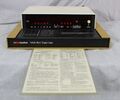1658: Difference between revisions
No edit summary |
No edit summary |
||
| Line 6: | Line 6: | ||
|image=GR 1658 Close-Up.jpg | |image=GR 1658 Close-Up.jpg | ||
|caption=General Radio 1658 RLC Digibridge | |caption=General Radio 1658 RLC Digibridge | ||
|series= | |series=1685 | ||
|introduced=1978 | |introduced=1978 | ||
|discontinued=1978+ | |discontinued=1978+ | ||
| Line 12: | Line 12: | ||
|manuals= | |manuals= | ||
* [[Media:GR 1658 RCL Digibridge 1658-0120-D 05_1980.pdf|General Radio 1658 RLC Digibridge Manual 1658-0120-D 1980]] | * [[Media:GR 1658 RCL Digibridge 1658-0120-D 05_1980.pdf|General Radio 1658 RLC Digibridge Manual 1658-0120-D 1980]] | ||
* [[Media:GR 1658 Operation Reference Information.pdf|General Radio 1658 Quick Reference Card 1658-0110-A]] | |||
{{Catalog History}} | {{Catalog History}} | ||
}} | }} | ||
Revision as of 01:41, 10 June 2024
The General Radio 1658 RLC Digibridge was available in Catalog 1978 only.
The Type 1658 Digibridge is a digital impedance meter and comparator utilizing microprocessor control. Basic accuracy is 0.1% using a five digit display for RCL and four digits for D/Q. It features a built in test fixture with the option for an extension cable. Measurements using 120 Hz or 1 kHz and series or parallel circuits are keyboard selectable. An optional communications IEEE 488 buss/handler interface is available. The 1658 is equipped with a comparator function for Go/No Go testing and sorting of components into logical "Bins". The limits and sorting information is entered using the keyboard. Using this function is possible to sort parts by percentage or value and display either.
The measurements are made by the Quadrature Sampling method. Using this method the standard and the unknown are in series and a sine wave is applied. Four voltage measurements are taken across the standard and then the unknown at four different phases of the sine wave. Using their magnitude and phase difference the processor calculates the results. Its interesting to note the 1658 uses three measurement rates. The slow rate takes five measurements, medium rate eight (Quadrature), and the high rate sixteen. Because the processor creates the test sine wave using a digital to analog converter it has exact phase information for its measurements and calculations. Because of this measurement technique no calibration is performed or required.
Specifications
- Measurement Ranges
- Resistance: 0.0001 Ω to 9.9999 MΩ at 1 kHz, 0.0001 Ω to 99.999 MΩ at 120 Hz
- Inductance: .00001 mH to 999.99 H at 1 kHz, 0.0001 mH to 9999.9 H at 120 Hz
- Capacitance: .00001 nF to 999.99 μF at 1 kHz, 0.0001 nF to 99999 μF at 120 Hz
- Dissipation Factor: .0001 to 9.999
- Q Factor: 00.01 to 999.9 for L/Q, .0001 to 9.999 for R/Q
- Basic Accuracy: 0.1%
- Test Frequencies: 120 Hz and 1 kHz
















